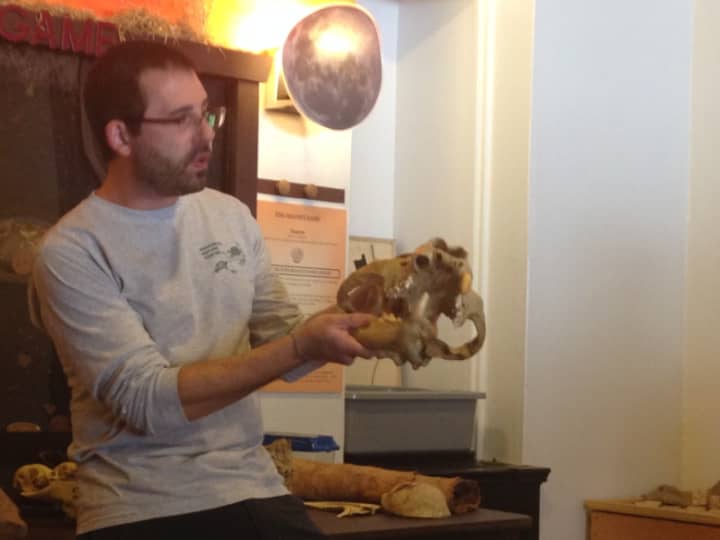Local children learned how to analyze the bones animals leave behind to answer these questions and more at the Greenburgh Nature Center.
Parents and children flocked to the center on Sunday afternoon for "The Bare Bones," an interactive program held regularly by the center featuring tons of bones and even a few live, furry friends.
Resident naturalist Greg Wechgelaer led the program, showing off some of the center's bone collection, including skulls from rodents, sharks, big cats -- and even a hippo.
Wechgelaer taught the children how to figure out whether an animal is a predator or prey by how the eyes are positioned on the head.
He offered the mnemonic device, "Eyes in the front like to hunt, eyes on the sides like to hide."
The Greenburgh resident, who lives in a small cottage on the preserve, also taught the children how to study the teeth of animals to determine what they eat.
Children were able to touch the skeletons and feel their weight -- and they learned facts about some of Westchester's local fauna along the way, including squirrels, coyotes, skunks, raccoons, birds and deer.
Wechgelaer also brought out a few of the center's 100 various animals: a ferret named Panda, a snake named Ginger, a chinchilla named ChiChi, a bearded dragon named Velcro and a rescued pygmy owl -- to show the children how bones work in action.
According to him, owls can turn their heads 360 degrees because of extra bones in their neck.
"A giraffe has seven bones in its whole, long neck. But owls, who can turn their head 360 degrees, have 13," he said.
The Greenburgh Nature Center is at 99 Dromore Road.
Click here to follow Daily Voice Pelham and receive free news updates.





